Having an excellent Security Operations Center (SOC) is a must-have of any organization that focuses on securing the privacy and safety of the stakeholders. OSINT can be an essential means to safeguard the system from hacker attacks, data leaks, viruses and many more threats. Learn how to make your SOC network robust with the help of the OSINT tools in this in-depth guide based on the experience of X-Ray Contact researchers.
What Does OSINT Mean?
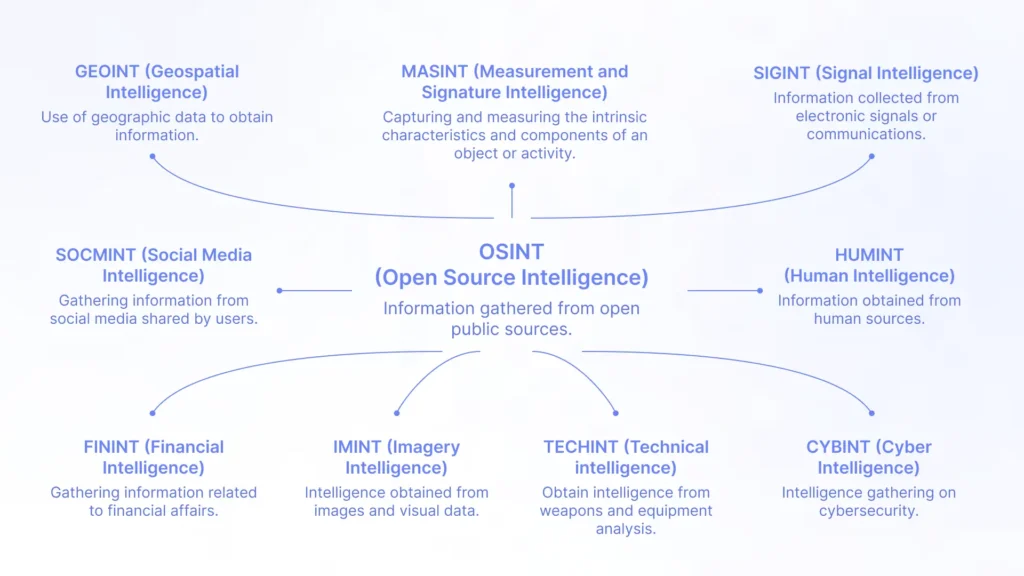
The term OSINT stands for open source intelligence. In a nutshell, it refers to the practice of collecting and analyzing publicly available information from a variety of sources to generate insights. OSINT has many branches since the data can be aggregated from different types of sources: social media, news outlets, government publications, academic papers, archives or even conversations with other people. Let’s break down the main types of OSINT that help organizations to stay secure:
- SOCMINT (Social Media Intelligence). In the digital age, exploration of the social media accounts of the person is the fundamental go-to for any person of interest investigation. The gist of this method is monitoring social media platforms for mentions, discussions and activities related to the organization, its employees, products, or services. It helps in identifying potential security loopholes, such as leaked sensitive information, phishing attempts or insider threats. The SOC team can use this measure to disclose the identities of culprits and collect insights about possible vulnerabilities of the organization’s defense barrier.
- Web Intelligence. This OSINT type is similar to SOCMINT, but it focuses on aggregating data from websites, forums, blogs and other online platforms for information relevant to the organization’s security. For instance, a SOC team can utilize web intelligence to dive into hacker forums for discussions about new malware or exploits targeting certain software vulnerabilities.
- HUMINT (Human Intelligence). The main idea of this approach is leveraging human sources, such as employees, partners, or industry contacts, to gather intelligence on potential risks to security. For example, a company that considers a partnership with a new vendor can leverage human intelligence OSINT by reaching out to a former employee who had worked closely with them in the past. During a casual conversation, the former employee might reveal insider information about the vendor’s lacking approach to cybersecurity, citing instances of data breaches and negligence. That’s how the SOC team can stay aware of what level of digital safety to expect from the new partner.
- GEOINT (Geospatial Intelligence). Here, the goal is to analyze geospatial data, such as satellite imagery, maps, photos and location-based information, to monitor the organization’s facilities and assets or disclose a certain location of interest. For example, a military organization might use GEOINT to monitor and assess potential threats to their bases or strategic locations by interpreting satellite OSINT photos for signs of suspicious activities or changes in terrain.
- Dark Web Intelligence. The task of this method is exploring deep web marketplaces, forums and communities. The key is finding traces of stolen data, compromised credentials, cybercrime-as-a-service offerings and discussions related to cyber threats targeting the organization. For instance, by infiltrating these forums and gathering intelligence on the methods and tools used by cybercriminals, the organization can take swift action to secure their systems, notify affected stakeholders and prevent future unauthorized access to sensitive data.
Who Needs OSINT Tools?
The SOC system, which integrates the elements of OSINT, can be useful in any domain, especially for a mid-size or a big company. OSINT is commonly employed by such organizations, as government agencies, law enforcement, private investigators and many other businesses, to gather insights, assess risks and adopt decisions based on this knowledge. Your organization may need to leverage OSINT tools in order to cover these cybersecurity needs:
- Threat Intelligence Gathering. OSINT tools can help organizations collect fresh data on emerging cyber threats, including malware campaigns, hacking techniques and defense weaknesses often exploited by malicious actors.
- Vulnerability Assessment. A thorough OSINT study of your organization’s safety protocols can be efficient in pinpointing the downfalls of the cybersecurity barrier so you can improve upon the gaps in the networks.
- Reputation Nurturing. You can be on top of the social media discussions with the OSINT tools. They allow organizations to monitor online platforms and social media channels for mentions of their brand, products or key personnel so that the company can address potential reputation risks, customer complaints or fraudulent activities.
- Insider Threat Detection. Another benefit of OSINT for organizations is to be aware of employee activity on public platforms to detect signs of insider threats, such as unauthorized data disclosures or discussions about sensitive information.
- Competitive Intelligence. You can employ OSINT tools to gather intelligence on competitors, including information about their products, strategies, market positioning, and even potential cybersecurity weaknesses. Then, you can use this information to showcase how partnering with your organization is a safer option for the stakeholders.
- Incident Response. In case of a cybersecurity incident, OSINT tools can assist the organization in getting hands on digital evidence from public sources, such as social media posts, hacker forums and paste sites. This measure is necessary for forensic analysis and investigating the culprits.
Why Do We Use OSINT in Our SOC?
However, what does it take to create an efficient OSINT framework within your Security Operations Center (SOC)? The answer depends on your needs and the threats common to your industry.
The Parts of OSINT Framework
Your SOC team should take into account present vulnerabilities and focus on the key OSINT types, taking into account the reliability, credibility, and relevance of each one to your organization’s objectives. Then, the task is to define which OSINT tools can effectively cover those needs.
How to Implement OSINT in Our Security Operations Center (SOC)?
Persuaded that your organization’s SOC will benefit significantly from OSINT? Let’s dive into the details of the options you have to build up your digital defense with OSINT elements and how each tool can come in handy depending on your needs.
Tools You Can Use for SOC OSINT
The OSINT tools differ based on the channels you use, the aims you attempt to reach or assets you attempt to protect. Pay attention to our overview of the most widespread kinds of OSINT instruments that can be beneficial for your business, depending on the circumstances.
Types of Information Channels
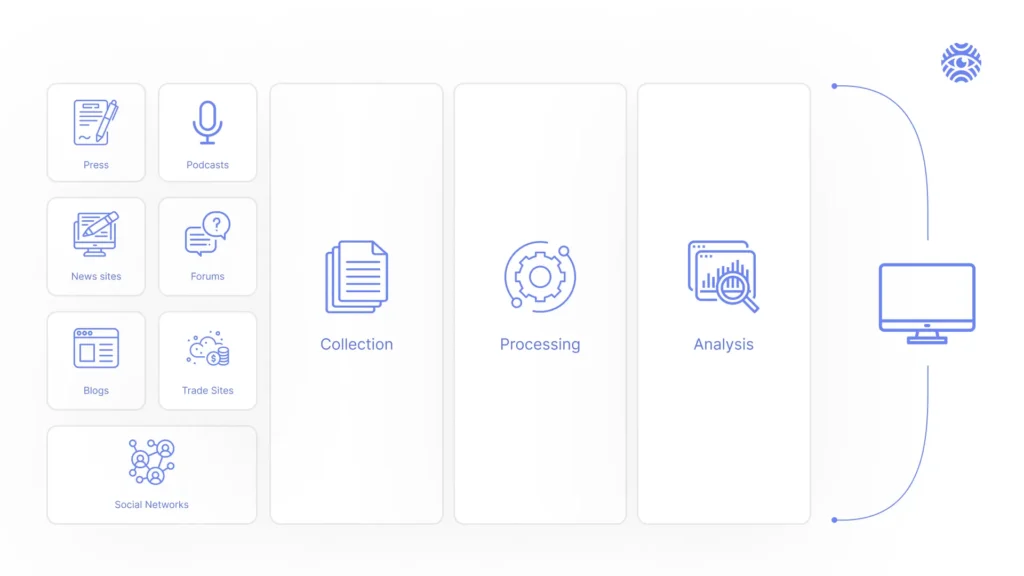
The decision on which OSINT tool to use largely depends on the way how you can collect open source intelligence and from which sources with the highest success rate. Here are the options of channels to choose from:
- Social Media. Due to how digitized the modern world is, online profiles can be a cornucopia of evidence on how a person tends to behave casually. Social media platforms such as Facebook, Snapchat, Instagram and Twitter are rich sources of open source intelligence. Users often share personal, professional and location-related information, as well as their opinions, life events and news updates. You can find there are a lot of insights one requires to create a person of interest profile.
- Websites. Online sites and blogs cover a wide range of topics and interests, providing valuable insights into individuals, organizations, industries and trends. That’s why OSINT monitoring of news websites, industry forums, and personal blogs can help measure public sentiment, validate someone’s identity and stay on top of the industry trends.
- Forums. Even though online forums might seem similar to social media channels, they can help to find more sincere and unfiltered communication examples. Oftentimes, people use different usernames to stay anonymous and reveal their controversial thoughts on such sites as Reddit. That’s why OSINT tools can help you dig into forums where users are more likely to express candid opinions, share personal experiences, or seek advice in a more open and authentic manner.
- Public Records and Government Databases. Such archives often contain a wealth of information on individuals, businesses, properties, licenses, permits and legal proceedings. That’s why accessing publicly available databases can provide valuable insights into a person’s or organization’s background. This feature comes in handy when your organization is doing a check on partner credibility before starting the cooperation in order to avoid financial and reputational damage.
- Online Marketplaces and Classified Ads. Discovering more about one’s activity on such platforms that host listings for goods, services and employment opportunities can be important in several scenarios. First, monitoring these platforms can provide information about market trends, pricing dynamics and potential business opportunities. Secondly, OSINT professionals can use marketplaces to reveal a person’s reputation as a seller or even find traces of fraudulent activity.
- Dark Web. The deep web and underground forums host illicit activities, including discussions on hacking, cybercrime, fraud and illegal trade. While accessing these channels requires specialized OSINT tools and precautions, they can provide valuable intelligence on emerging vulnerabilities.
- Data APIs. Various public data sources, APIs and data aggregators provide access to datasets, statistics and geospatial information. This is why accessing and analyzing this channel of publicly available data can yield insights into demographics, economic indicators and geographic data.
- Academic Press. Journals, research papers and scholarly publications offer in-depth analysis of various fields of study, including science, technology, medicine, economics and social affairs. It can be beneficial to analyze academic resources for sentiment analysis or to assess the professional background of a potential partner.
Types of Goals
The insights gathered with OSINT will vastly vary based on what is the final aim of your investigation. Some of the most popular reasons the organization might need to keep track of open source data are:
- Do Threat Intelligence and Threat Hunting. The SOC of the organizations should conduct OSINT investigations to gather intelligence on potential threats, including cybersecurity weaknesses, physical safety risks and geopolitical tensions. Moreover, even if the breach or like has already occurred, the OSINT methods are crucial to minimize the damage and make sure it will not happen again.
- Study the Competitive Market. By monitoring competitor websites, product reviews, customer feedback, and industry forums, organizations can gain insights into competitor strategies, product offerings, pricing dynamics and customer preferences. That’s how businesses can make informed decisions and stay competitive in the market.
- Facilitate Investigative Journalism and Research. One can use OSINT tools to verify sources and uncover hidden insights for news stories, reports and academic studies. That’s how investigators can corroborate evidence, uncover new leads and shed light on important issues of public interest.
- Do a Due Diligence Check. The goal here is to do background verification on individuals, companies or other entities before entering into business partnerships, hiring employees or making investment decisions.
- Benefit Brand Management. Businesses have to monitor their online reputation and brand perception by tracking mentions, reviews and discourses on social media, review websites and news outlets.
- Manage a Crisis. OSINT plays a crucial role in crisis response and emergency management by providing real-time information and situational awareness. For example, it can come in handy during natural disasters, public emergencies or security incidents.
- Conduct a Criminal Investigation. Law enforcement agencies and criminal investigators use OSINT tools and techniques to gather evidence, track suspects, and uncover criminal activities such as fraud, cybercrime, human trafficking, and terrorism.
Types of Organization
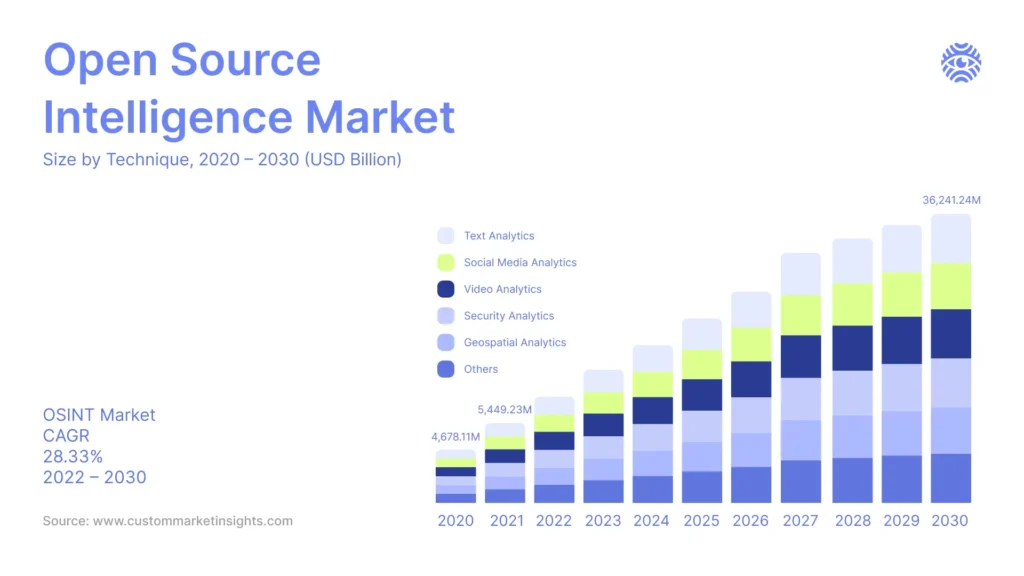
Finally, another major deciding factor is what is the nature of the organization and what resources SOC is required to protect? The most popular options:
- Corporate Assets. Oftentimes, OSINT is used to take care of the business’s reputation, property and position on the market, among other things. OSINT tools can be applied to secure patents, trademarks, copyrights and trade secrets. Protecting IP is essential for businesses to maintain their competitive edge and prevent unauthorized use or replication by competitors. Another application domain is financial data, as breaches can lead to theft, fraud, regulatory fines and damage to a company’s reputation. If the company collects and stores customer information, OSINT can be useful in safeguarding sensitive customer information such as names, addresses, purchase history or credit card information. This asset is especially important as the mishandling of customer data can result in legal liabilities and loss of trust for the company.
- Government Assets. In this case, the task is often to protect the information of the national level of importance, in some cases, from foreign culprits who try to compromise the security of the whole state. Robust cybersecurity measures, including firewalls, intrusion detection systems and endpoint protection solutions, are implemented to defend against cyber threats such as hacking, malware and phishing attacks. OSINT can complement the typical SOC activity. For example, OSINT can be used to gather intelligence on potential threats, including information about foreign actors, their tactics, techniques, and procedures, along with emerging cyber threats targeting governmental assets. OSINT sources, including social media platforms, hacker forums, and dark web marketplaces, can be monitored for indicators of compromise and early warning signs of attacks.
- NGO Assets. Non-governmental organizations often handle sensitive data, including donor information, project details and beneficiary data. That’s why implementing strict data security measures such as encryption, access controls, and regular data backups is essential to protect against data breaches and unauthorized access. OSINT tools enable NGOs to conduct comprehensive risk assessments by overviewing the operational environment, including political, social and security threats. By collecting and analyzing data with OSINT tools, NGOs can verify the legitimacy, credibility and reputation of entities or people before engaging in partnerships or transactions. Moreover, OSINT techniques can help NGOs ensure their transparency and investigate the possible schemes of fraud and corruption within the organization.
- Personal Privacy. Lastly, protecting one’s personal brand and private information can be a top-level priority for people who work with sensitive information, have a strong public presence or have high-ranking jobs. This includes safeguarding personal information such as home address, contact details, and family members’ information to prevent unauthorized access or misuse. Furthermore, users such as celebrities, executives or influencers need to actively manage their online reputation to protect their personal brand. OSINT evidence can come in handy to address any negative publicity or false information promptly.
Examples of Top-Tier OSINT Tools
After auditing the needs and wants of the organization with the SOC team, the next step is choosing which specific OSINT strategies to adopt. With different scenarios in mind, we’ve listed some of the best OSINT tools in the game and how your Security Operations Center (SOC) can be enhanced with them.
Use X-Ray Contact
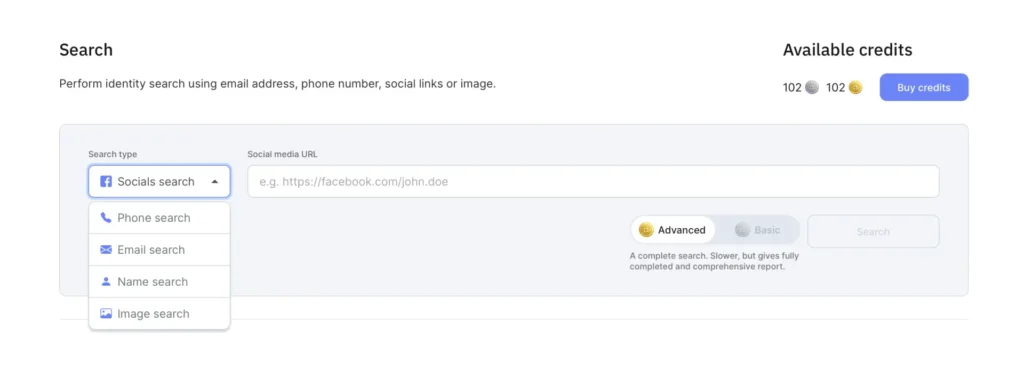
Data aggregator X-Ray Contact can help the SOC team streamline the task of verifying someone’s identity. The service works with 4 information channels: image, name, phone number and email address. No matter which one of these data types you have at hand, you can look up a person using the “Search” tab.
X-Ray Contact can be useful no matter the organization type, as it can be integrated into different domains, from personal security to marketing and hiring. Choose X-Ray Contact if your SOC analysts want to work with such information channels like social media, websites and possibly open-source records to automate safety checks.
Leverage Recon-ng
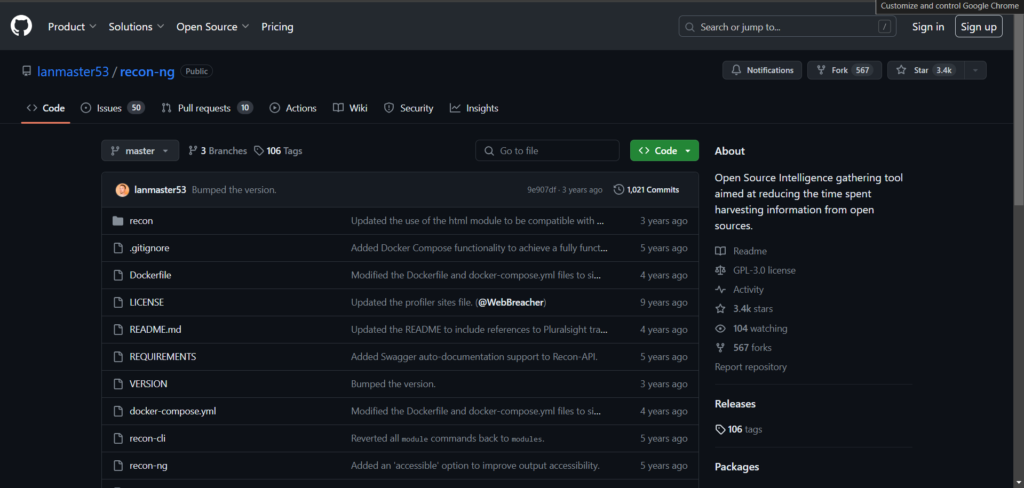
Recon-ng is a powerful open-source reconnaissance framework that can significantly enhance your SOC’s capabilities. It is designed for web reconnaissance, providing a modular framework to gather information from various sources such as public databases, search engines and social media platforms.
Moreover, Recon-ng can be easily integrated with other OSINT tools. This feature can allow your SOC team to streamline the reconnaissance process and extract valuable insights from different sources. Recon-ng is highly customizable and extensible, allowing SOC teams to develop custom modules or scripts tailored to their specific needs based on the goals, stakeholders or industry.
Benefit from URL Scan
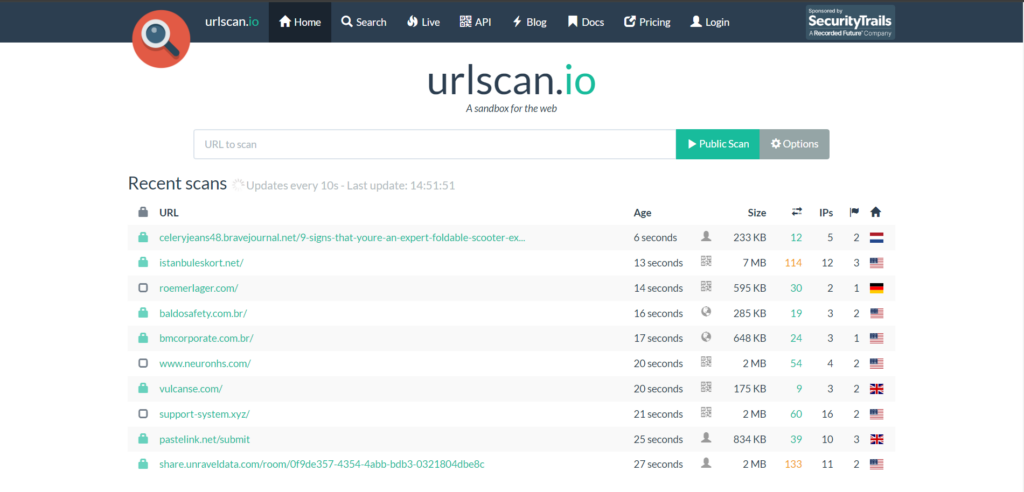
URL Scan helps identify potentially malicious links by scanning web addresses for indicators of compromise, such as known malware domains, phishing sites or malicious scripts. This proactive OSINT approach allows SOC teams to preemptively block or investigate suspicious URLs before they pose a threat to the organization.
This service provides valuable threat intelligence by aggregating and analyzing data from scanned URLs, including metadata, reputation scores and historical trends. SOC teams can leverage this intelligence to identify emerging threats, track adversary tactics and enhance their overall cybersecurity barrier.
Involve Maltego
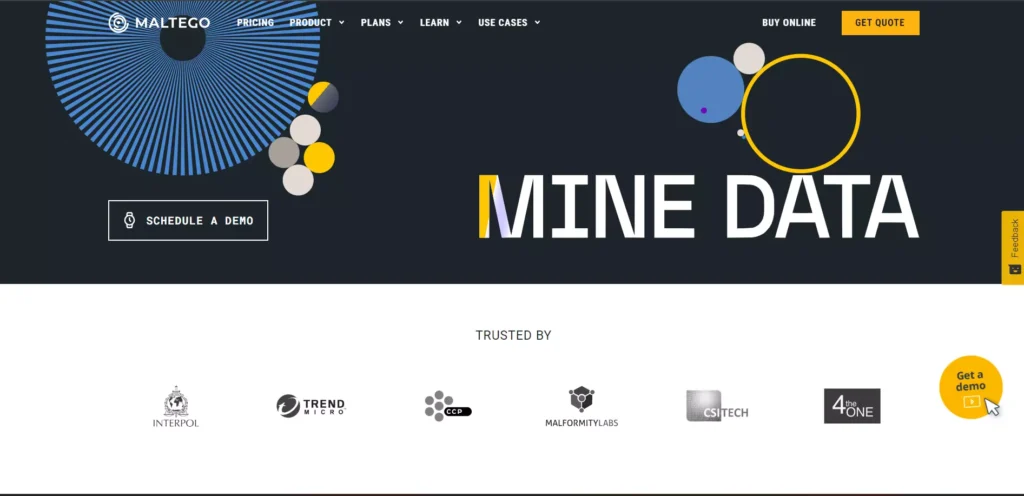
Maltego allows SOC experts to collect and visualize data from various sources, such as open source intelligence, social media platforms, public databases and other public records. SOC analysts can use Maltego to identify connections between seemingly unrelated pieces of information, uncovering hidden patterns and potential threat vectors.
Additionally, Maltego integrates with various threat intelligence feeds, enabling SOC teams to benefit their investigations with up-to-date data. This service supports collaboration and insight sharing among SOC team members, enabling analysts to work together on investigations and network on the case in real time.
Utilize Google Dorks
SOC teams can adopt Google Dorks to search for sensitive information inadvertently exposed online, such as login credentials, database dumps or confidential documents. By wiring targeted OSINT queries, analysts can identify potential security risks stemming from misconfigured servers, unprotected cloud storage or compromised websites.
Google Dorks can help identify vulnerable systems or devices connected to the Internet by searching for specific software versions, open ports or known vulnerabilities. SOC analysts can craft dorks to search for indicators of compromise, malware samples, exploit kits or underground forums where cybercriminals network. In addition, SOC teams can use Google Dorks to monitor their organization’s brand reputation and online presence by searching for mentions.
Study With FOCA
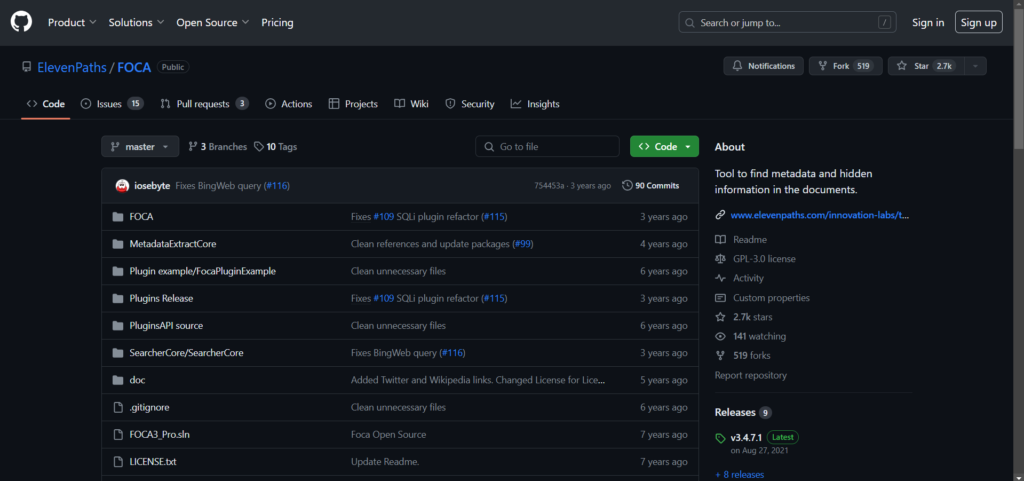
FOCA can extract metadata from documents, such as author names, timestamps, software versions, and network location information. FOCA can scan document contents to identify keywords, phrases or patterns indicative of sensitive information, intellectual property or potential security threats. SOC teams can use this metadata to gain OSINT insights into the origins of documents, track their distribution and identify potential security risks related to leaked or improperly shared files.
Conclusion
Even though adding OSINT tools can be an intimidating task, don’t shy away from enhancing the efficiency of your Security Operations Center (SOC). After analyzing what your organization needs to boost security, integrate OSINT instruments that will make your digital defense much stronger than before.
